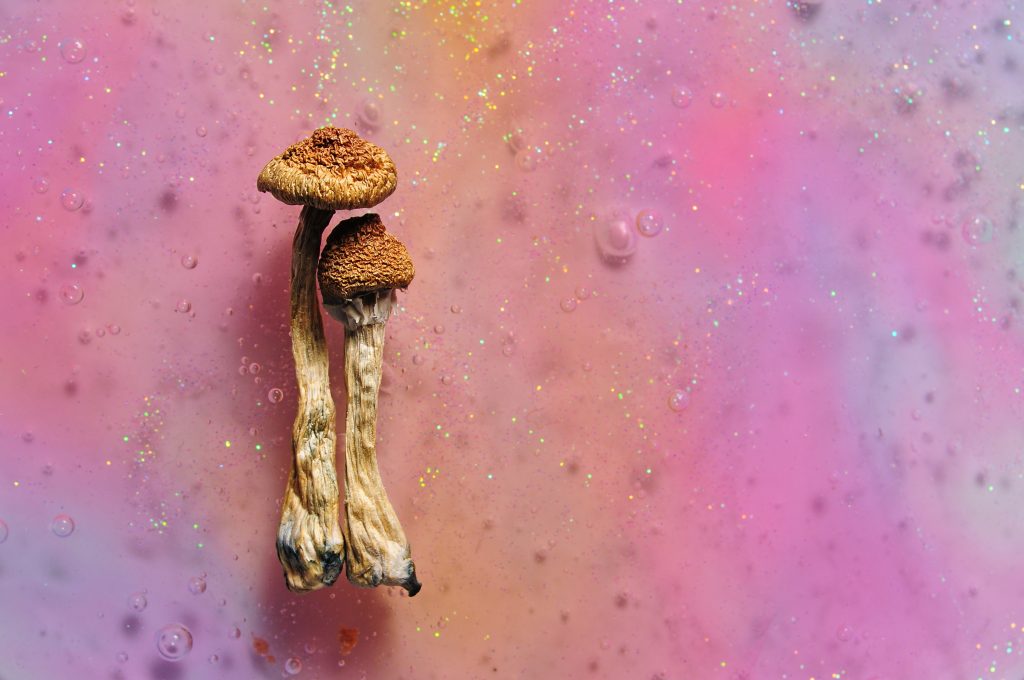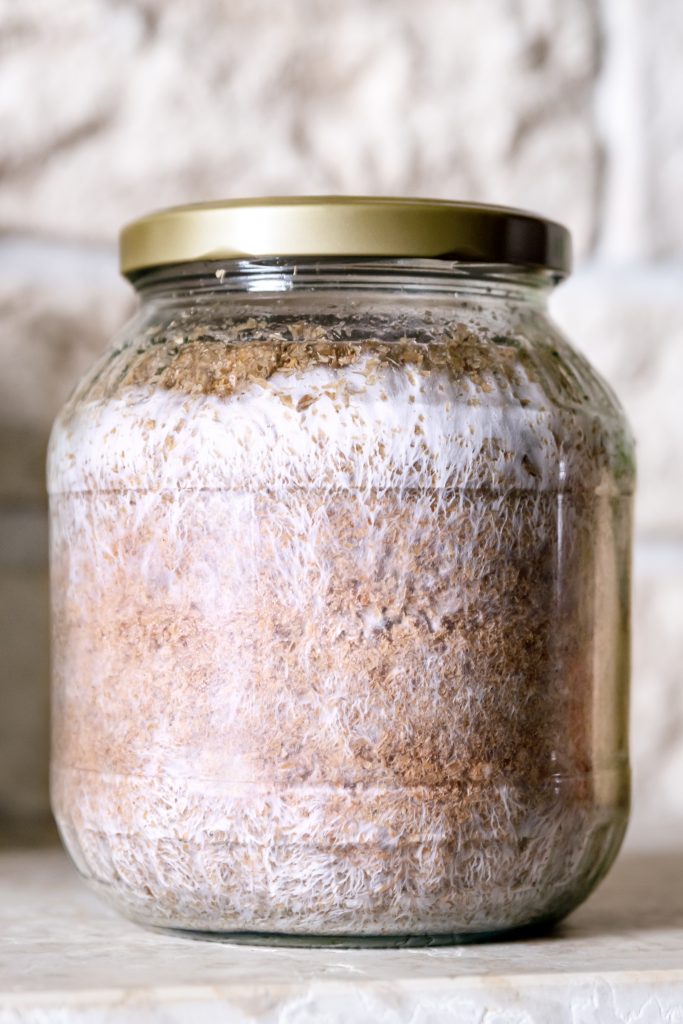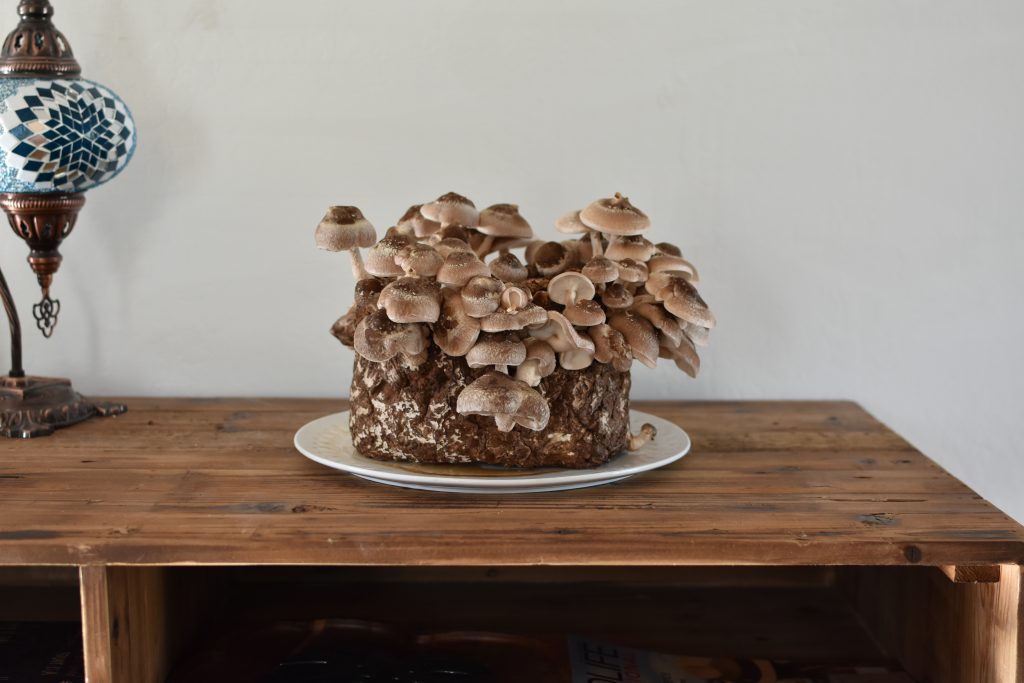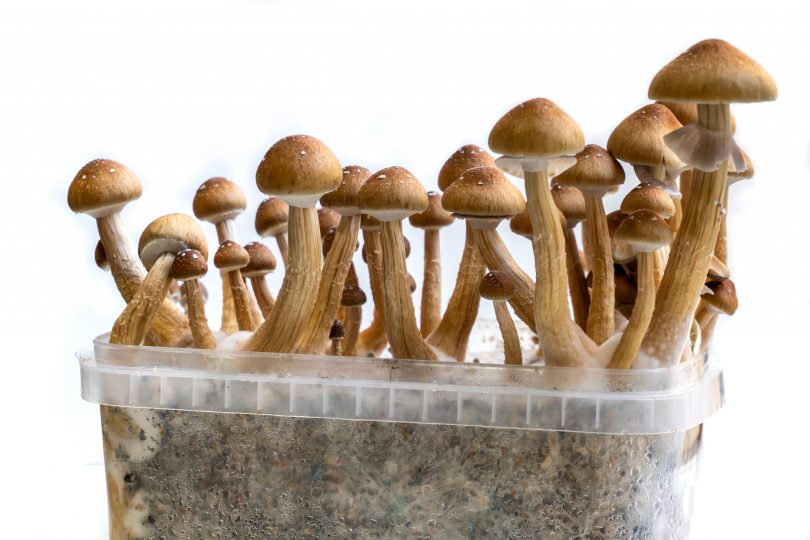The medical psychedelic boom has already started with the release of esketamine. Now, with MDMA and psilocybin on the way, medical psychedelics are looking to majorly disrupt the standard mental health treatment industry. And the great thing about psilocybin is, much like cannabis, the mushrooms it comes from, can be grown in home. Here are some basics to know, if you want to learn to grow mushrooms.
Disclaimer: While legalization is almost a sure thing, psilocybin is illegal in most states, while holding decriminalization status in some, and medical legalization status in Oregon. Mushroom growing equipment is legal to own, and this article is merely helping people learn the process to grow mushrooms, it is not telling anyone to do so, or telling them they should grow any specific kind of mushrooms. This information covers mushroom growing for all types of mushrooms.
What are magic mushrooms?
Magic mushrooms are a group of varying fungi that all contain the psychedelic compound psilocybin, as well as lesser psychedelic compound psilocin. These psychedelic compounds operate like other psychedelic compounds like LSD, and MDMA by being serotonergic – attaching to serotonin receptors, and creating a ‘psychedelic experience’.
The term ‘psychedelic’ refers to a class of compounds in the general grouping of hallucinatory drugs, which is itself a subset of ‘psychoactive drugs’, or drugs that can change perception. Psychedelic drugs vary, but they are known for creating a similar experience, complete with hallucinations – things that are felt, seen, heard, smelled, or tasted, that are not actually there. Along with hallucinations, psychedelics are known for creating a sense of spirituality in the user, a feeling of connectedness with others and the universe in general, a feeling of over overall well-being, mystical feelings, and euphoria.
If you’ve ever heard someone talk about a ‘bad trip’, this refers to a negative psychedelic experience in which the user has negative – or scary – hallucinations and physical symptoms, like fast or irregular heartbeat, nausea, chills, sweating, and anxiety. Though psychedelics have been generally judged as safe, dosing is important, with bad trips more often associated with too much of a compound being taken. New users might want to start with micro dose amounts, as is often what is used in psychedelic-assisted therapy.

Learn to grow mushrooms
For those that like to do it on their own, growing mushrooms is not the most intense exercise, and can be done with just a few different tools and basic instructions. The first thing you need, of course, is mushroom spores, which generally come in a syringe, much like the oil syringes used for cannabis oil. They are usually 12CCs. To be clear, mushroom spores are legal as they contain no psychoactive compounds within them.
- The first real step has to do with growing the mycelium network, a network of tiny thread-like structures that are produced by fungal spores, and which is necessary for any mushroom growth. In order to do this, you need a substrate – or way in which the mushrooms will grow. For this, something called vermiculite is used, which is a mineral that looks like a rock, or rock chips. Approximately 2/3 cup is used in a jar, as creating a mycelium network is best done in a jar. ¼ cup of water is added, and ¼ cup brown rice flour.
- The jar being used should have a tightly fitting cap, and should have about four holes drilled into it. The vermiculite and water are mixed and then strained, and then the rice flour added. This mix is then packed into the jar up until about a half-inch below the rim. Dry vermiculite is put on top. It should be noted that all tools used should be sterilized with rubbing alcohol to ensure no bacterial contamination.
- The jar is tightly closed and covered with tin foil or plastic wrap to keep the drilled holes covered. The jar is placed in a pan, with water filling the pan until about halfway up the length of the jar. The water is brought to a slow boil, and for 75-90 minutes the jar is steamed. More water can be added to the pan if too much boils away. The jar is then allowed to cool for several hours.
- Then come the spores. The holes on the lids are uncovered and the syringe is inserted as far as it will go and split between the four holes. It’s good to clean the syringe in between putting it in each hole. The jars should then be kept in room temperature, and out of sunlight. Many people prefer to keep them in a dark closet.
- It takes about 1-2 weeks for the mycelium network to begin to grow. It takes about 3-4 weeks for full colonies to grow and form cakes. At this point, another week should be given to strengthen the mycelium cakes. Any jar that looks contaminated should be disposed of as soon as possible, making sure all equipment used is sterile is best to ward off contamination.

- At this point, a plastic storage container is taken and holes are drilled all over it in even intervals. The container should be put on four stable objects to keep the bottom from touching the surface so air can flow through. A towel is put over it to retain moisture.
- The next step is to take something called perlite (a volcanic glass which expands when heated), clean it with water, and then put it at the bottom of the container. There should be about 4-5 inches covering the base. The mycelium cakes are taken out of the jars where they’ve been growing, and carefully washed to remove vermiculite, and then put in lukewarm water – made to stay underneath it – for about 24 hours. This is to rehydrate them. Then they’re taken out, rolled in dry vermiculite, and put in the storage container on foil squares, so the cakes don’t directly touch the perlite. They should be evenly spaced. Then they’re sprayed with a mist bottle, and fanned off before the lid is closed.
- The container should have mist sprayed on it about four times a day, being careful not to soak anything. The container should also be fanned several times a day to make sure there’s air circulation. Regular light is generally fine at this point, though some growers use growing lights on a 12 hour cycle. The mushrooms will take varying times to grow, but the grower will know something is happening when white bumps appear on the cakes. These then sprout into ‘pins’, and harvest comes about 5-12 days after this point. The whole process takes approximately 1-2 months, which is far less than the 3-6 associated with growing cannabis.
Grow kits
Not everyone wants to put that much time and effort into growing their mushrooms, and – to show how far along this industry is – there are mushroom growing kits that greatly break down the amount of time and energy needed to grow mushrooms. Mushroom growing kits generally contain all the needed equipment, and are streamlined to help the grower. This is like buying marijuana growing equipment which has already been streamlined to help the user have an easier and more productive experience.
Growing kits often include a box, or log-type instrument, which is already seeded with spores and ready to go, meaning the entire setup phase is not necessary. These are called pre-colonized fruiting blocks. The kits must be kept moist, and at the right temperature, but this is menial work compared to actually growing from nothing. Since the kits already have the mycelium network setup, the whole part of creating a mycelium network from scratch, doesn’t have to happen. They also usually come with a mushroom growing bag, which can remain dormant if kept in low temperatures.
Each kit will come with its own instructions, and when looking to buy a kit, a prospective grower should ensure the kit they buy is good for the kind of mushrooms they want to grow. These kits are not sold specifically for magic mushrooms at all, but are made so that all kinds of mushrooms can be grown in-home. If you want to learn to grow mushrooms with a kit, it means you will learn how to grow all kinds of mushrooms.

Why should we expect psilocybin to be legalized?
There is actually very little saying psilocybin won’t be legalized for medical use in the US. In fact, Oregon already applied such legalities to the compound in the last 2020 election. But more importantly than Oregon specifically, is that the US FDA (Food & Drug Administration), has already earmarked psilocybin as a ‘breakthrough therapy’. What does this mean? According to the FDA, a ‘breakthrough therapy’ is a:
“…drug that treats a serious or life-threatening condition and preliminary clinical evidence indicates that the drug may demonstrate substantial improvement on a clinically significant endpoint(s) over available therapies.”
The FDA doesn’t randomly assign this, but the designation is given when a company has done – or is doing – medical trials that signal they have a compound that might be a better option than existing remedies. In 2019, the FDA assigned its second designation for this to Usona Institute, the first was given a year before to Compass Pathways in their study of psilocybin as a therapy for treatment resistant depression.
The reason this matters is because psilocybin is currently a Schedule I drug in the US Controlled Substances list, made completely illegal in 1968 with the Staggers-Dodd bill in the US, and then followed with the 1970 Controlled Substances Act, and the international drug treaty, the Convention on Psychotropic Substances 1971, which actually only illegalizes the psilocybin, and does nothing to illegalize magic mushrooms, a conundrum seen in many parts of the world. The idea that a government agency could – and would – allow this designation for a Schedule I compound does a lot to say how the US government actually feels about it.
After all, the breakthrough therapy title is meant to get drugs tested and to market. A similar designation was made for MDMA in 2017 for the organization MAPS, and their study of the compound for PTSD. Phase three of MAPS trials were even planned in conjunction with the FDA to ensure that results would meet all regulation standards. Now, that really says a lot.
Conclusion
Anyone looking to grow mushrooms should know the laws of where they are, and be prepared to deal with any issues surrounding their grow. Realistically, as mushrooms get closer to legalization, they will likely follow in the same steps as cannabis, with home growing becoming standard, and very little the government can really do about it. For now, these basic instructions highlight the general process. Prospective growers should do further research, and remember, these instructions are for growing all mushrooms.
Hello and welcome! You made it to Cannadelics, the #1 spot for the most relevant and up-to-date cannabis and psychedelic-related news globally. Read through the site every day to stay aware of the ever-changing world of legal drugs, and become a part of our newsletter list, so you always know what’s going on.
Disclaimer: Hi, I’m a researcher and writer. I’m not a doctor, lawyer, or businessperson. All information in my articles is sourced and referenced, and all opinions stated are mine. I am not giving anyone advise, and though I am more than happy to discuss topics, should someone have a further question or concern, they should seek guidance from a relevant professional.









